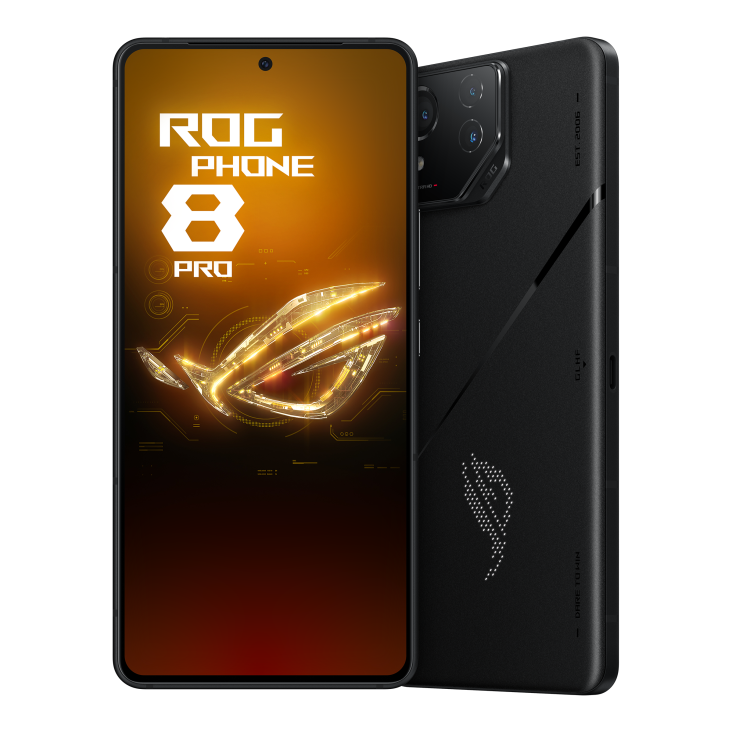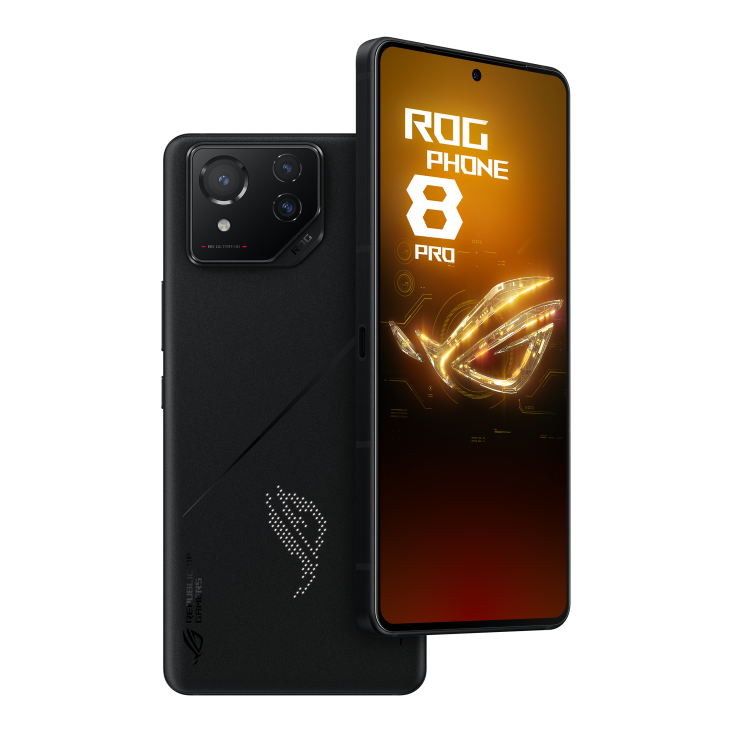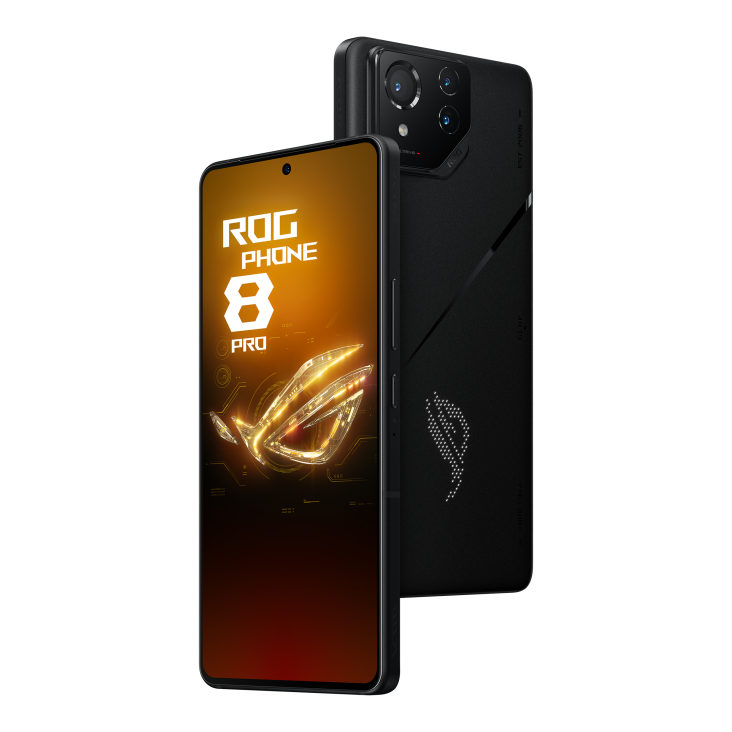Pros
- Well-calibrated 165 Hz screen.
- High-end performance.
- IP68 certification.
- AeroActive Cooler X included…
Cons
- Camera quality falls behind.
- Only two years of Android updates.
- AeroActive Cooler X optional in versions other than 24 GB + 1 TB.
As an Amazon Associate I earn from qualifying purchases.
Asus, known for its gaming PC expertise, has been expanding into the smartphone market since 2018 with the launch of its first ROG Phone. The 8 Pro version, released in early 2024, is meticulously crafted.
Overview
A few years ago, playing a demanding game required a high-end smartphone. The Razer Phone was one of the first to target the mobile gaming market explicitly. Since 2018, Asus has followed with the ROG Phone, quickly becoming a leader in gaming-focused devices.
Drawing from its gaming PC range, Asus released the ROG Phone 8 Pro on 7 February 2024. It’s priced at €1200 for the 16/512 GB version and €1500 for the 24 GB/1 TB version tested here, which includes the AeroActive Cooler X (optional for other versions at €80). At this price, the ROG Phone 8 Pro competes with the likes of Xiaomi 13 Pro, Sony Xperia 1 V, and the new Samsung Galaxy S24+ and Ultra.

Ergonomics and Design
The ROG Phone 8 Pro from Asus maintains its distinctive gamer design, with less rounded lines and more subdued finishes than its predecessors. It features AirTriggers, ultrasonic sensor areas for assigning various functions, a mini-jack port, and dual USB-C ports for comfortable use in both portrait and landscape modes. The side USB-C port also accommodates the AeroActive Cooler X, an accessory for intensive gaming sessions.
The 6.78-inch Amoled display on the front covers over 88.6% of the total surface, resulting in slimmer bezels and a discreet punch-hole for the selfie camera. It also houses an effective fingerprint reader. The phone’s dimensions have been slimmed down compared to previous models (163.8 x 76.8 x 8.9 mm, weighing 225 g), which is noticeable in the hand and may surprise those used to bulkier phones.
Despite its matte plastic back, the device exudes a high-end feel. Brand inscriptions, a transverse line, and the AniMe Vision, a 341 mini-LED programmable display visible through the casing, give it a futuristic look. The back resists fingerprints but can be a bit slippery. A minor downside is the protruding camera module, which can make the phone wobble when laid flat.
The ROG Phone 8 Pro is IP68 certified, protecting it from dust and immersion up to 1 m in water. It also boasts extensive connectivity options, including Bluetooth 5.3, NFC, 5G, wireless charging, and Wi-Fi 7, recently introduced in France by Free with its new Freebox.
Audio The 3.5 mm jack on the ROG Phone 8 Pro offers impressive output power, minimal distortion, and an above-average dynamic range. The stereo sound is excellent, and the ability to connect a wired headset helps avoid potential Bluetooth audio latency in games.

Display
Asus has a reputation for high-quality displays, and the ROG Phone 8 Pro is no exception. The device features a 6.78-inch Amoled screen with 1080 x 2400 pixels in a 20:9 ratio. Its LTPO technology allows a variable refresh rate between 1 and 120 Hz, peaking at 165 Hz. The maximum brightness of 1254 cd/m², combined with a reflectance of 44.25%, ensures excellent visibility in sunlight. At its lowest, the screen is comfortable for dark environments at 5.9 cd/m² under our probes. We would have preferred it to be a bit less bright.
In terms of default calibration, the screen achieves a delta E of 2.8, dropping to 1.2 in standard mode with a colour temperature of 6674 K (7652 K out of the box), close to the reference standard. The display offers infinite contrast (typical of OLED) and zero remanence, with a touch delay of 37 ms, enhancing gaming and multimedia experiences.
Performance
As expected of a premium smartphone, the ROG Phone 8 Pro uses Qualcomm’s Snapdragon 8 Gen 3, the top-tier SoC of 2024. Paired with 24 GB of RAM, the device handles all tasks with ease, and its 165 Hz refresh rate ensures fluid operation. The device excels in gaming, averaging 165.9 fps, making it the most powerful gaming smartphone on the market. It maintains nearly continuous 166 fps at peak and drops to 121 fps at the lowest. This performance surpasses competitors, positioning it as the most powerful smartphone currently. Heat is well-managed and can be further controlled during long gaming sessions with the AeroActive Cooler X, available as an optional or standard accessory depending on the version.
Camera
Asus has revamped its camera setup, replacing the macro module with a 3x telephoto lens. The new lens is paired with a 32 MP sensor, while the rest of the configuration mirrors the ROG Phone 7. The device features a 50 MP main module and a 13 MP ultra-wide lens.
Main Camera: 50 MP, f/1.9, eq. 24 mm
Despite Asus’ efforts to improve its camera, it’s hard to see a significant difference compared to previous models, especially against its competitors. Daytime shots, while decent, lack sharpness, with exaggerated micro-contrasts and washed-out colours. The software processing focuses on the image centre but neglects the periphery. In low light, the ROG Phone 8 Pro captures scenes with fairly accurate colours but suffers from excessive smoothing, reducing detail levels.
50 MP Mode At full resolution, daytime shots are more detailed than on the ROG Phone 7 Ultimate, but the processing struggles with accurate detail reproduction. At night, excessive smoothing diminishes the mode’s usefulness.
Ultra-Wide Camera: 13 MP, f/2.2, eq. 13 mm
The ultra-wide module’s images are disappointing. While colours are natural, focus is inconsistent, leading to blurry areas. The overall image is acceptable without zooming in, but lacks detail and suffers from noticeable smoothing.
In low light, digital noise compounds the general lack of sharpness. The vibrant colourimetry lacks accuracy, and the processing attempts to boost contrast to improve clarity. The edge of the book cover in our test demonstrates this ineffectiveness.
3x Telephoto Module: 32 MP, f/2.4, eq. 65 mm
The 3x zoom struggles to impress. Colours are somewhat natural, but the overly exaggerated contrast attempts to create an illusion of sharpness. Our colour dot chart reveals confused software processing, with textures disappearing, as seen on the book cover, and an overall lack of detail.
The smartphone performs comparably to its competitors in low-light telephoto shots. Some chromatic aberrations and excessive contrast are noticeable, but the results are usable, albeit not for demanding users.
Front Camera, Portrait Mode, and Video
The 32 MP (f/2.5) front camera, similar to the previous model, captures convincing selfies day and night, with accurate colours, well-managed brightness, and satisfactory portrait mode edge detection. In video, the device can record up to 8K at 24 fps. The combination of optical (OIS) and electronic image stabilization (EIS) minimizes shaking.

Battery Life
The ROG Phone 8 Pro features a 5500 mAh battery, smaller than the 6000 mAh in the ROG Phone 7 Ultimate. Although the Snapdragon 8 Gen 3 chip is energy-efficient, the new smartphone falls short in endurance compared to its predecessor. The previous model lasted 22 hours and 9 minutes on our viSer test protocol, while this model lasts 17 hours and 45 minutes. This is still a good performance, allowing for a full day’s use under normal conditions. However, endurance decreases with repeated gaming sessions.
For charging, the device includes a 65 W block, reaching 100% in under 50 minutes. This is very satisfactory compared to competitors. Additionally, the ROG Phone 8 Pro supports 15 W wireless charging, as expected at its price point.
Durability
Our durability score assesses the smartphone’s sustainability for both consumers and the environment. It considers the repairability index, durability criteria (protection rating, standard connectors, warranty and update duration), and Corporate Social Responsibility (CSR) policies. Full details of the analysis are available in our article on the durability score. While the ROG Phone 8 Pro is IP68 certified, its software support is a weak point: only two years of Android updates and four years of security patches, compared to seven years offered by Google and Samsung. Its repairability score is a modest 6.8/10.
Interface & OS
The ROG Phone 8 Pro runs on Android 14 with the ROG UI, offering numerous gaming-focused customization options. The Armoury Crate app includes games and associated presets, such as display mode and AirTriggers settings. The Game Genie function allows performance mode modification, frame rate monitoring, device heat tracking, and brightness level locking. The device has minimal pre-installed apps, excluding those from Google and Meta.
Conclusion
The ROG Phone 8 Pro from Asus epitomizes consistency, offering another excellent gaming smartphone. It boasts increased power and an outstanding screen. While the company has updated the camera block with a telephoto lens, enhancing versatility, the results could be better. The phone excels in gaming optimization, its primary purpose. However, a more generous update policy would make the ROG Phone 8 Pro an ideal long-term choice.
As an Amazon Associate I earn from qualifying purchases.
